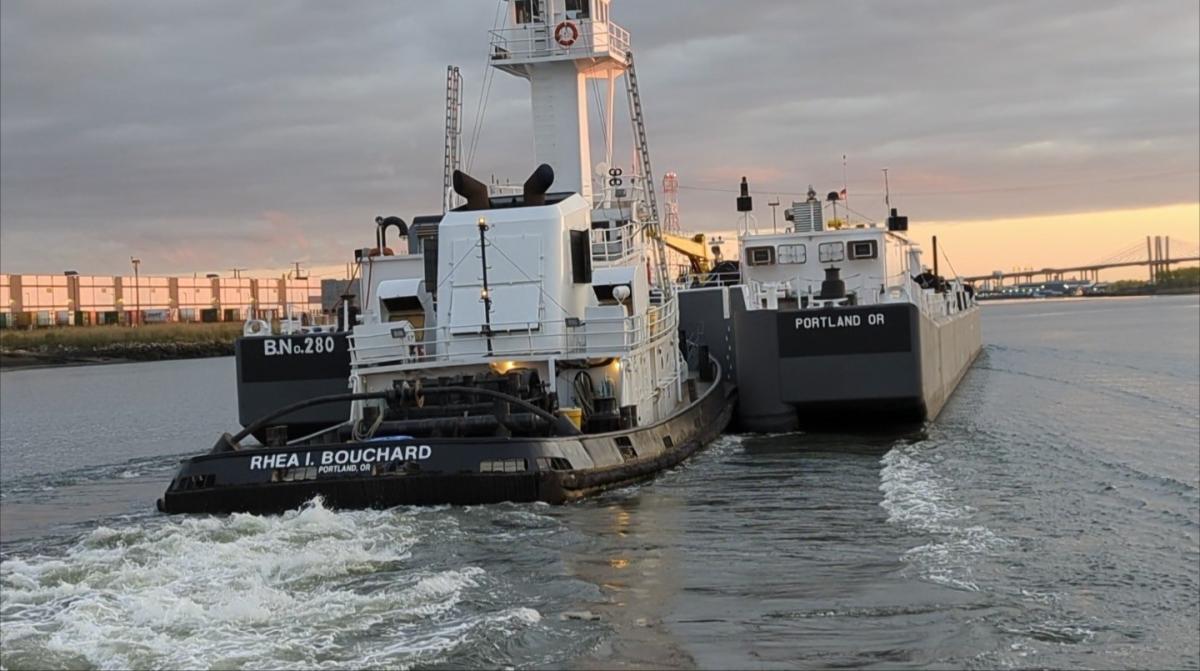Oakland Man's Journey to Becoming a Mariner

Tugboats, a New York City icon, were steam-driven in the 17th Century.
As the industrial revolution evolved, as many as 700 engine-driven tugs could be seen in the New York Harbor’s waters, moving millions of tons of freight, immigrants coming to America and GI servicemen serving in wars.
With the advent of railroads, trucking, and airplanes, fewer tugboats are in use today. Nevertheless, tugboats are still a vital part of the movement of barges and ships filled with oil, grains and other important goods.
Peter Festa, 27, dreamed of having a career as a sea mariner. How did he, a lifelong resident of Oakland, find his way to employment in one of the world’s largest and busiest harbors, the New York Harbor?
“I was not seeking adventure, but I was open to it,” he says. “The path I took after high school and my time as apprentice in the maritime industry has definitely given me the best experiences of my life.”
From early on, Festa stayed focused on his goal.
“I went to Oakland schools, then to Don Bosco, where I was on the Crew Team. I graduated in 2013 and had dreams of going to the Naval Academy or the Coast Guard Academy, but I didn’t want to have to wade through the academic part of it.”
Festa studied at Suni Maritime College for 2 ½ years and attended Montclair State University for three semesters.
“Then I heard about the Seafarers’ Harry Lundeberg School of Seamanship in Maryland, a trade school where I could actually study maritime skills and become an apprentice on deep-sea ships,” he explains. “From there, I could join the Seafarers’ International Union.”
Festa enrolled in the apprentice program at Lundeberg.
“Thanks to people in the industry, I was able to find and target a career path that fit me perfectly.”
Festa was assigned by the Lundeberg School to Crowley Ships’ cargo carriers as an on-deck apprentice. The ships carried tons of grain, fuel and military vehicles to ports around the world.
“The first part of my apprenticeship began in Oregon, where I boarded the ship Ocean Glory,” he says. “We sailed from Oregon, across the Pacific to Oman through the Suez Canal. We unloaded our cargo of grain and sailed back to Houston. It was smooth seas mostly and I was thinking about all I was experiencing.”
Before the Ocean Glory returned to Houston, Texas, Festa was informed that the 86-day journey to Oman was short of the required 90 days at sea. He was told he had to ship out again on another trip to meet his requirement.
“After a layover in Houston, we set sail across the Atlantic Ocean, crossing the Mediterranean Sea and the Suez Canal heading for Djibouti, Africa, on the ship USNS Sgt. William R. Button,” he says.
“As we passed through the Suez Canal, I stood security watches as a look-out eight hours a day alongside an armed security team we had on board. I remember seeing the sandy shores of Egypt and thinking that was very cool.”
The ship completed its delivery of grain in the Port of Djibouti and set sail for Japan crossing the Indian Ocean, which was in turmoil.

”Our ship had a rough time crossing the ocean to Japan,” he says. “The ship was rolling and pitching side-to-side and port-to-starboard almost the whole way. Finally, we reached Kobe, Japan and delivered our cargo of grain and military vehicles.”
From Tokyo, Festa flew home to resume his course work at Lundeberg for five weeks until it was time to ship out on his final sea journey heading to the isolated Mariana Islands way out in the Pacific, stopping in Guam and Saipan, islands which both saw furious battles between American and Japanese soldiers during WWII.
“On the long trip home, I realized how much I had learned about myself in the eleven months sailing around the world,” he says. “I saw the differences in cultures and I was amazed at the places I had been to. It was a tremendous experience and it affected me. I realized the value of traveling to other places.”
Coming home to Oakland, having completed his maritime courses and sailing requirements, Festa now actively sought a place to begin his career as a member of the Seafarers’ International Union using all that his apprenticeship and course work had taught him.
“I had sailed on the deep sea, saw a large part of the world, but I felt I had been away on the sea too long and far away from everything I know.”
Festa decided that, for now, working from home is what he wanted to do.
“Since September of 2021, I’ve been working for Centerline Logistics in Bayonne, New Jersey, as a member of the Seafarers’ International Union on Tugboat Andria that services barges and ships that arrive in the New York Harbor. It’s an area from the Kill van Kull and the New York Harbor to the Newark Bay Channel. Ninety percent of the time we move fuel barges from dockside to ship (bunkering) or we move barges to the Statue of Liberty where they are anchored until needed.”
Festa’s work schedule is two weeks aboard the tugboat and two weeks off.
“I’m on watch from midnight to 6 a.m., then I sleep until 12 noon. At noon, I have another watch until 6 p.m., then sleep until midnight,” Festa explains. “A ‘watch’ consists of maneuvering the tugboat and making the connection with the barge. I’m also responsible for cleaning and organizing equipment and other steward duty.”
Festa has just the schedule that suits him.
“I’m on duty and live on the tug for two weeks, then I’m off two weeks and come home to Oakland. I like to tell my friends I work only half a year. The pay is very good and so is my schedule.”
His parents are happy and proud Festa has achieved his goals and is enjoying his work as a mariner.
“My parents have supported me all the way,” he notes. “In the future, I will have more options. I might try another type of vessel, like a small, private cruise ship that’s for charter. This job is the best kept secret in the U.S. It pays good, solid money and the lifestyle is great, as long as you have no problem with sailing.
“I have a message for the young people coming out of school: Don’t forget to consider the maritime industry. It’s a great option. Consider a maritime academy or trade school for your education and for your future.”
Terri Casaleggio is a contributing writer for the newsletter.

